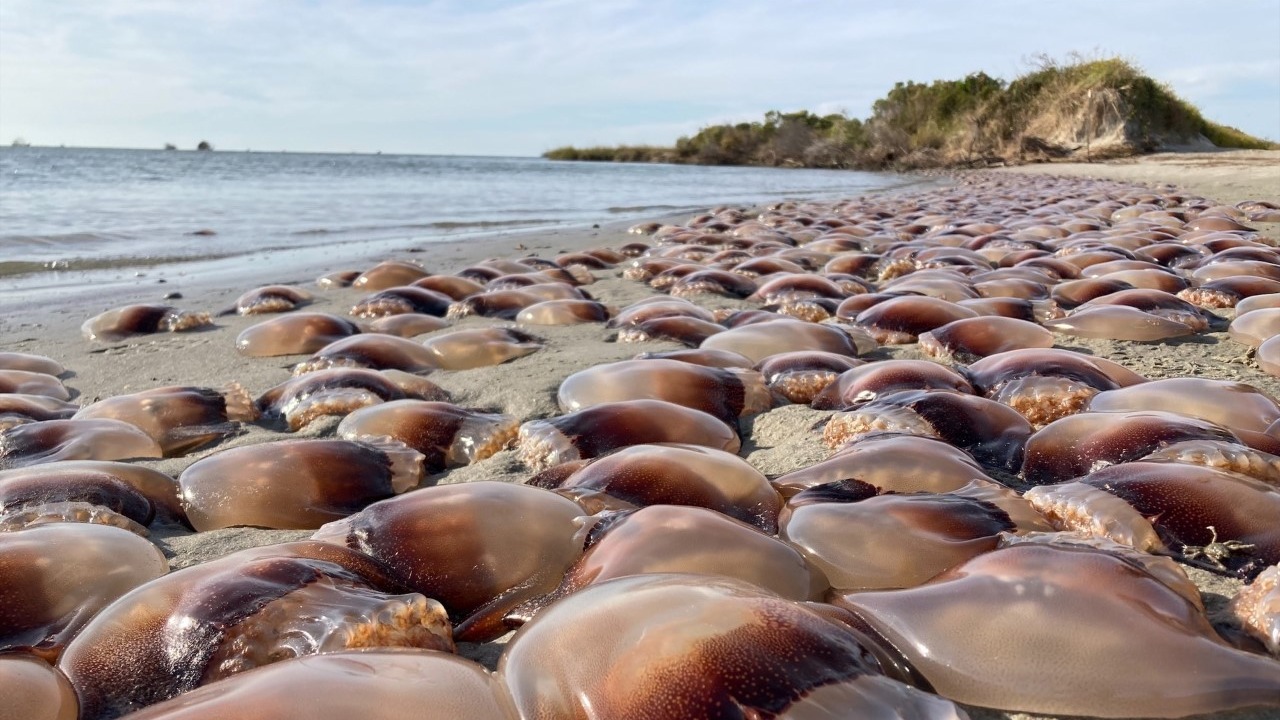Thousands of cannonball jellyfish wash ashore after swarming North Carolina’s Outer Banks
The "jellyfish jamboree" was the result of a red drum spawning event.

Thousands of globular cannonball jellyfish (Stomolophus meleagris) have washed ashore along a stretch of North Carolina coastline in what is being dubbed a "jellyfish jamboree."
Park rangers from the Cape Hatteras National Seashore, part of the National Park Service (NPS), snapped photos of the spectacle on Friday (Oct. 14) and shared it in a Facebook post.
The "large swarm" washed up along the northern edge of Ocracoke Island, one in a chain of islands that makes up the Outer Banks. The sudden influx of these squishy, stinger-less blobs coincides with the presence of red drum (Sciaenops ocellatus), a species of saltwater fish that's currently in the midst of spawning season — the fish’s larvae also happen to be the preferred snack for the jellyfish, according to the post.
Similar to actual cannonballs in both shape and size — the jellies weigh about 1 pound (450 grams) on average and measure 10 inches (24 centimeters) in diameter — the species is one of the most common types of jellyfish along the southeastern coast, according to the Georgia Department of Natural Resources.
So why did they wash up now?
"Jellyfish rely on winds and currents to help them swim. Colder water temperatures, winds and currents can all play a role in them washing ashore," the post read.
Related: Thousands of jellyfish swarm near Israel, mesmerizing images reveal
Get the world’s most fascinating discoveries delivered straight to your inbox.
And the stars lined up particularly well this year: a red drum spawning event combined with colder water temperatures to create a huge seafood buffet for the voracious blobs, according to Newsweek.
"Why blooms occur in some years and not in others, or why sometimes blooms are larger in some years compared to others is all tied to environmental factors, but not well understood," Cheryl Lewis Ames, an associate professor of applied marine biology at the Graduate School of Agricultural Science, Tohoku University in Japan, told Newsweek. "In my several decades of jellyfish research I have found that few jellyfish species will reliably show up just when you expect them."
Jennifer Nalewicki is former Live Science staff writer and Salt Lake City-based journalist whose work has been featured in The New York Times, Smithsonian Magazine, Scientific American, Popular Mechanics and more. She covers several science topics from planet Earth to paleontology and archaeology to health and culture. Prior to freelancing, Jennifer held an Editor role at Time Inc. Jennifer has a bachelor's degree in Journalism from The University of Texas at Austin.


